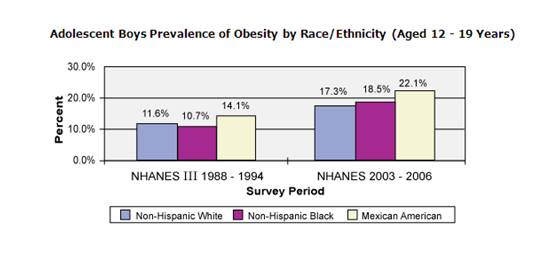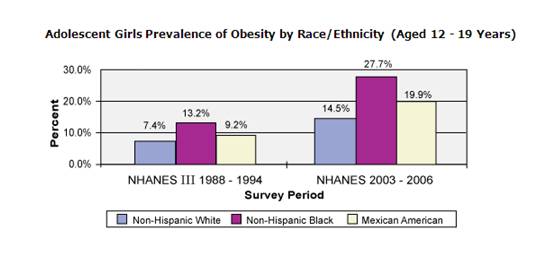Contributing Factors

"Screen time"
For each hour per day of TV viewing, the prevalence of obesity increases by 2% (Dietz, 1985)
Inactivity
Children who are sedentary are more likely to be overweight than children who exercise on a regular basis (Singh, 2008).
Ethnicity
Native Americans, non-Hispanic blacks, and Hispanics are more likely to be obese than Caucasians (Anderson, 2009)


Food choices
- Sugary beverages
- Fast food
- Lack of fruits and vegetables and increased intake of simple sugars and foods high in fats
- Overeating - more calories taken in than expended
- Large portion size
- Seconds and thirds
- Eating at night
- Eating while watching TV or doing homework
- Eating while riding in the car
- Frequent snacking
Parental factors
 http://www.cdc.gov/obesity/childhood/causes.html
http://www.cdc.gov/obesity/childhood/causes.html
-
Parental obesity
- increases the risk of obesity in the child 2 - 3 fold
-
Parenting styles:
- Overly restrictive parenting may cause the child to be less adept at self-regulating his or her eating behaviors. Parents should encourage the child to recognize when he or she has reached satiety
-
Single parent homes:
- Children in single parent homes may have an increased incidence of obesity but this may be confounded by other factors (Gibson, 2007)
-
Parental recognition:
- Few parents recognize the child's true weight status (Rhee, 2005, Parry, 2008)
- Parents are more likely to make changes impacting their child's weight status when:
- The child is older (8-12 years)
- The parent is overweight and recognizes they are overweight (and this is seen as a problem)
- The child's weight is recognized as a health problem
